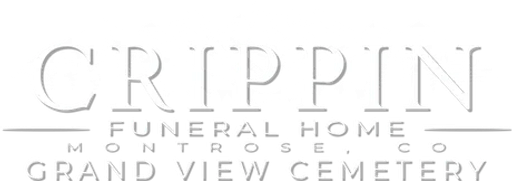

Stanley (Stan) Paul Pennypacker, Ph.D.
February 24, 1941 — December 7, 2019
Stanley Paul ‘Stan’ Pennypacker, Ph.D.
Stanley Paul Pennypacker, 78, died peacefully in his home in Montrose, CO, on December 7, 2019. He was born in Fleetwood, PA on February 24, 1941, to the late Lovina F. Strause Pennypacker and Leo A. Pennypacker. He walked to a one-room schoolhouse near Walnuttown, PA prior to attending Oley Valley High School. Stan continued his education at Penn State University (PSU), where he graduated with a B.S. in Forestry, an M.S. in 1964, and a Ph.D. in Agronomy in 1971. His graduate research focused on the micrometeorology of forests and forest soils.
Following graduate school, Stan worked with Dr. Al Wood in the Department of Plant Pathology at PSU to study the effects of the environment and air pollution on forest tree diseases. As a research associate in the department, he was responsible for environmental monitoring. He was hired as a faculty member in Plant Pathology in 1973, where he taught and conducted research on the epidemiology of plant diseases. During the 1970s and early ‘80s, PSU became the foremost institution in the U.S. in plant disease epidemiology, due to the leading research by Stan, fellow faculty members, and their graduate students.
Stan and his graduate students made major contributions in determining the effects of the microenvironment (such as the weather within and around plant canopies) on diseases of tomatoes, field crops, and greenhouse crops, and the effects of plant disease epidemics on yield loss of several crops. Stan was well-known for his early work with his students on the development and application of models for characterizing and comparing plant disease epidemics, for predicting yield-loss and other crop responses to disease, and for forecasting the risk of disease outbreaks and the need for control interventions based on weather conditions. Other significant research contributions involved the use of remote sensing to quantify plant diseases and plant stress, determination of key components of the disease cycle for high-impact diseases, and elucidation of the effects of certain air pollutants and environmental factors on plant responses. He was a pioneer in the use of computers for data collection and analysis.
Stan was in great demand for his knowledge of micrometeorology and instrumentation for measuring the physical environment in and around crop canopies. He gave advice to countless individuals in these areas throughout his career. He also taught a graduate-level course on plant disease epidemiology for over two decades; this course put a special emphasis on prediction of epidemics based on environmental data and simulation models. Stan was very effective in recruiting and advising graduate students in plant disease epidemiology. His Ph.D. students became successful faculty members at several institutions, including Cornell, Ohio State, North Carolina State, University of Florida, Michigan State University, and New Mexico State University. Two of his first Ph.D. students were elected president of the American Phytopathological Society (APS), the largest organization of plant pathologists in the world.
Stan was an active member of APS for several decades, serving two terms on APS Council as Treasurer and one term as Councilor for the Northeastern Division of the society. As Treasurer, he was able to convince the rest of Council to implement policies to build up a financial reserve over time in order to help ensure the long-term health of the organization. In recognition of his many achievements, he received the Award of Merit from the Northeastern Division of APS for significant contributions towards graduate education, research, and the profession of plant pathology. Stan retired from PSU in 2000 as Professor Emeritus of Plant Pathology.
Stan was an avid horseman and raised two generations of his first horse Goldie in Spring Mills, PA. He had a life-long interest in archery, and more specifically crossbow archery. Stan was an excellent shot and represented the United States in World Crossbow competitions in Australia, England, Germany, Hungary, New Zealand, Portugal, and Sweden. He placed first in the U.S. Nationals in 1988, first in the Worlds IBO Championship in 1990, and held the Pennsylvania State Archery Association (PSAA) 900 round record for 25 years. He was president of the Eastern Archery Association (6 yrs.), Vice-President of The National Crossbowmen of the USA (7 yrs.), board member on the North Central Region of the PSAA, and member of the National Field Archery Association, the National Archery Association, and the USA Crossbow Team.
Stan was intrigued with the mechanics of crossbows and enjoyed designing and machining many innovations that increased both their accuracy and ease of handling. While Stan’s crossbows were in demand, he preferred the challenge of continually making improvements to them rather than focusing on mass-production. In recognition of his devotion to the sport, he was elected into the Crossbow Innovators category of the USA Crossbow Hall of Fame in 2018.
Stan moved to Montrose, Colorado in 2011, where he enjoyed woodworking, hunting, fishing and ATV trail riding in the Rocky Mountains. He was an avid member of the Woodworkers Guild of Western Colorado, in which he held the office of President for two years, the Montrose Area Woodturners, and the Uncompahgre Valley Trail Riders. He also participated in the Huntsman World Senior Games (in crossbow) for several years.
He is survived by his daughter Kathryn R. Pennypacker Spangler of Arvada, CO, his partner Vickie J. Day of Montrose, CO, and his former wife Barbara W. Pennypacker of State College, PA.
Guestbook
Visits: 22
This site is protected by reCAPTCHA and the
Google Privacy Policy and Terms of Service apply.
Service map data © OpenStreetMap contributors



